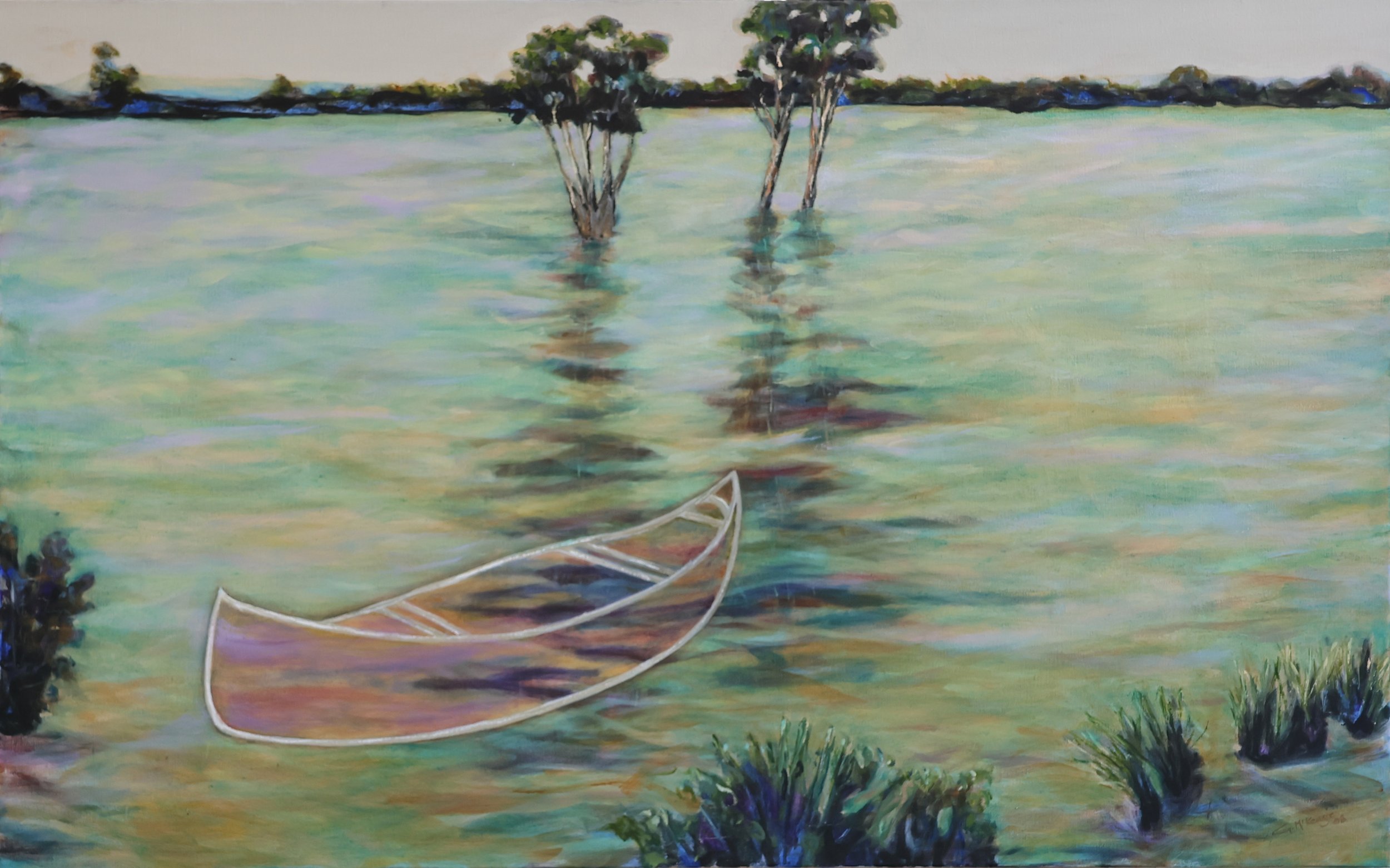
Graham McKenzie (1943–2019)
Graham McKenzie was a Melbourne-based landscape painter, printmaker and teacher.
Over the course of his career, Graham travelled extensively across Australia, including to many remote communities in the north, as well as regional and local destinations. His paintings from these journeys reflect his deep appreciation for the diverse landscapes he encountered. Rather than creating direct representations, Graham’s works offer personal and emotive interpretations of place, inviting viewers to engage with the beauty and atmosphere of the landscapes he depicted.
Graham’s artistic practice extended across various media. Over a fifteen-year period, he designed sets and costumes for companies such as The Australian Ballet, The Australian Ballet School, and the Australian Contemporary Dance Company. In 1987, he created and designed a full-length ballet for Human Veins Dance Theatre in Canberra, performed during the Bicentennial Celebrations in 1988.
After completing his teacher training in Melbourne, Graham began his teaching career in a school in Victoria’s Wimmera region before returning to Melbourne to teach in the city. He later accepted a teaching position in Canada, followed by a move to England, where he worked at the Whitechapel Art Gallery in London. Throughout these years abroad, Graham continued to paint, exploring the landscapes of North America, England and Europe.
Returning to Australia, Graham worked at Art Stretchers Co as School Representative and Technical Advisor. It was here that he acquired his large breadth of knowledge about art materials and techniques. Graham taught in numerous secondary schools and institutions including Methodist Ladies College and Wesley College. Throughout this time, he also continued his own practice, exhibiting regularly.
He ran workshops for the NGV Gallery Society and after retiring from secondary school teaching, Graham taught regular classes at the Victorian Artists Society.
During his career, Graham held 26 solo exhibitions and participated in numerous group shows and art prizes throughout Australia.
Graham McKenzie passed away in December 2019.
ARTIST STATEMENT
"I developed my interest in art at a very early age. It began even in the years before I attended school. My mother had an association with some of the artists, who became known as the Heidelberg School, often visiting them, maintaining a friendship first established by her artist stepmother. I was aware of numerous small paintings, usually hung low on the walls, which many years later I realized were the famous 9 x 5 paintings. To me they were paintings made for children to look at due to their size and position on the walls.
This interest in the landscape has also been strongly influenced by the relationships people have to the land and how we respond to it. I have explored these relationships through the various subjects or locations I choose to paint. Most of my paintings over the last two to three decades have come from trips I made to outback Australia, specifically visiting many remote Aboriginal communities.
The paintings are primarily all aerial views giving the landscape a flatter appearance, some devoid of a horizon. In these works, the random marks of nature are often contrasted with the grids (symbolized by airplane windows, roads, fences etc.), which overlay the landscape, reflecting our need for ownership. In some works I explored the idea of changing viewpoints in the one work. These differing viewpoints are linked together through the colour and texture in the paintings. The surfaces also reflect the rugged, harsh experiences in these landscapes, but they also explore the fragility and beauty of the outback.
My interest in painting the outback also lead me to a four week residency on a Bush Heritage Australia property in northeast South Australia during 2007. This was my longest period of actually working continuously in a specific remote landscape.
In late November 2007 I badly injured my right shoulder. Painting at an easel was out of the question so I started experimenting using my left hand. I complete a large body of works on paper and canvas, inspired by the local area along the Yarra River between Abbotsford, Kew and Fairfield. The change in style has subsequently carried through into (much of) my more recent paintings.
In all my years painting I have referenced and explored our notion of beauty: our meanings of and how it has been applied, and how we state and determine this through a personal rating system. Not every painting carries this as it main theme but it always lies close by.
I believe that beauty is determined by nature. It will always provide society with a starting point, yet it is soon overlooked when a constructed beauty is talked about. Our roads, our bridges, our buildings and all that we create, are considered in a gauge of beauty yet it is what we see in nature that stands the test of time. When challenged, we always return to the idea that this is the most beautiful place on earth, a place that it is separated from any reference to human habitation. This influence has been guided by my many visits to the remote Aboriginal communities and learning about their culture.
I am not painting a canvas that directly copies the beauty I am experiencing but rather I want it to challenge each viewer to seek out their own understanding of beauty from the memories they carry."
